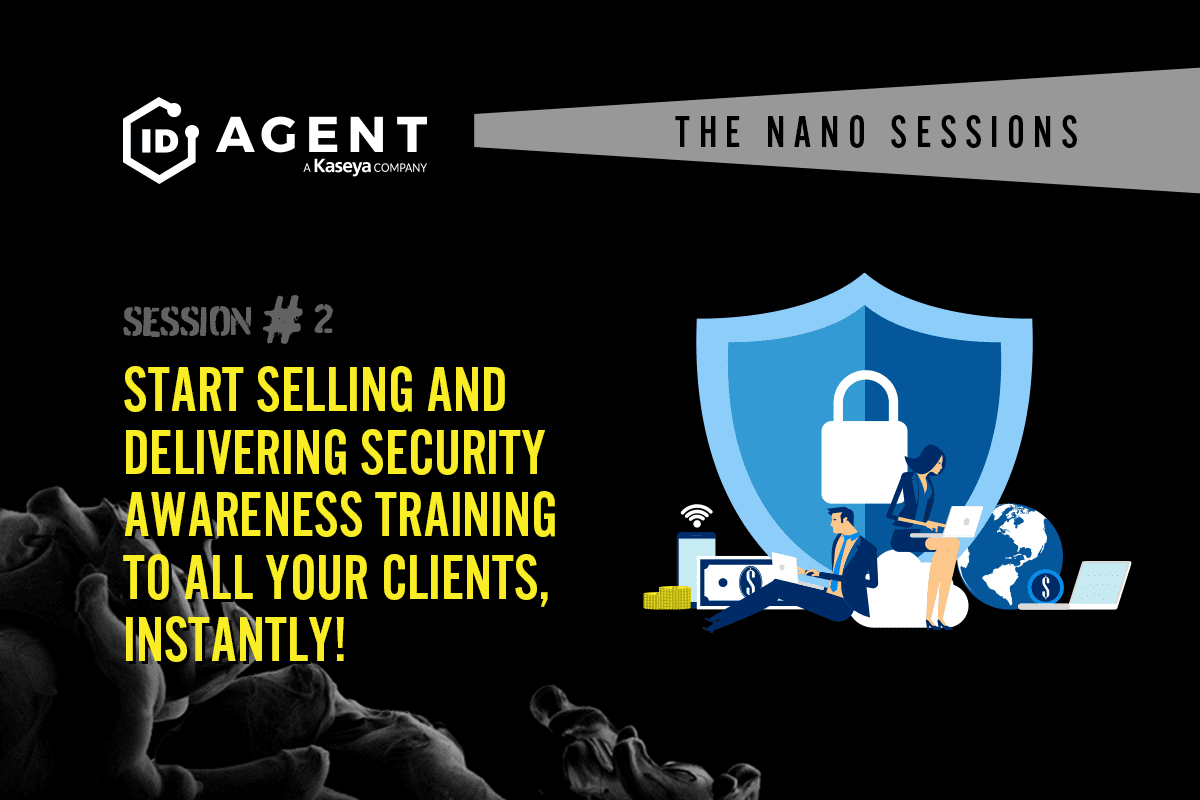What’s The Biggest Remote Workforce Cybersecurity Pitfall?

Remote Workforce Cybersecurity Holds Unexpected Dangers
As the global pandemic continues to shape the way that we live and work, many companies are finding themselves supporting a remote workforce for significantly longer than they anticipated in March 2020. With the chaos of getting everything back up and running in the spring, many of those same companies are discovering that remote workforce cybersecurity is a little bit different than in-office cybersecurity, with a few unexpected pitfalls.

Want to Borrow Our Sales and Marketing Teams? OK!
Get expert sales and marketing help to power up your MSP in a flash with Powered Services Pro. LEARN MORE>>
Some employees and businesses did little or no work remotely before the pandemic and were unprepared for some of the challenges that regular remote workers are accustomed to facing. In addition, many people found themselves in quarantine with their children and other family members who were also working or learning from home in a chaotic and nerve-racking time. That opened businesses up to unexpected risks – but our security suite can help mitigate them.
Phishing attempts are constant, with organizations in every sector under siege daily. Nearly 75% percent of organizations in the United States experienced a successful phishing attack last year. Those attacks packed a punch. In the 2021 IC3 Report, the US Federal Bureau of Investigation estimated that businesses lost $4.2B to cybercrime in 2020 led by phishing. That’s a situation that is only getting worse for businesses. An astonishing 80% of respondents in a recent survey said that they had experienced an increase in the number of phishing attacks that their organizations faced. More attacks mean more lures are making their way into employee inboxes providing even more opportunity for the number one driver of risk, human error, to cause a phishing-related disaster.
Distraction & Exhaustion
Between the kids distance learning, streams of deliveries, a roiling news cycle, unusual work patterns and schedules, and additional home pressures from sharing space, remote workers were faced with myriad distractions in the heady months of the spring of 2020 that wouldn’t be a problem in the office. That sea change created an enormous burden on IT departments. As you might expect, distracted workers make mistakes – In a comprehensive study of over 1,000 remote workers, 47% of respondents cited distraction as the main factor in their failure to spot phishing attempts. More than 55% of workers admitted that they were frequently distracted when working from home.

Did you catch all of the growth-focused MSP tips at MSP Growthfest? Listen to the recording now to be sure. LISTEN NOW>>
Isolation & IT Weakness
When workers are in the office, it’s easy for them to call on IT personnel to help them with problems or questions. A quick trip down the hall is usually sufficient to solve most IT issues. But when they’re at home, workers are less likely to reach out to their IT department. A department that’s probably understaffed. Of the companies surveyed, only 39% feel they have adequate IT expertise on staff to assist employees with remote work issues, and only 45% of organizations reported having enough budget available to address the increased activity and risk.
Endpoint Surprises & Confusion
Some companies faced a hasty scramble to get everyone back to work, often allowing employees to use their personal computers and devices to conduct business. Even employees who had their work devices handy found the line between using those devices for business and private purposes growing increasingly blurry, with confusion over BYOD policies and device access common. These remote worker endpoints represent major security vulnerabilities to cybersecurity professionals. Over 55% cite smartphones, laptops (50%), and other mobile devices (48%) as major points of concern.

See how to grow your business with a new revenue stream in the time it takes to drink a cup of coffee. LEARN MORE>>
Protect Your Business from Its Biggest Remote Workforce Cybersecurity Risk Fast
What do all of these remote workforce cybersecurity pitfalls have in common? They’re all problems that are caused by people. The number one cause of a data breach is always human error, and in each of the three examples, it’s apparent that the human element is the X factor that exposes businesses to additional risk. By adding one strong security tool, many of these dangers can be ameliorated quickly.
CISOs around the world and institutional experts agree: secure identity and access management is a top priority for every business in 2021. That’s because a solution like Passly solves many cybersecurity problems with just one affordable solution. This multifunctional weapon includes
- Multifactor authentication that helps stop password compromise based cybercrime like credential stuffing and an expert recommended mitigation for ransomware threats.
- Single sign-on that gives IT teams the power to quickly add and remove permissions from each user’s individual launchpads, both removing stress on IT teams from constant password problems and empowering them to quickly isolate compromised accounts.
- Simple remote management with secure shared password vaults allows for faster, smoother responses for IT personnel with fewer headaches and also adds extra protection for the credentials that can be used to access your most important assets.
Remote workforce cybersecurity pitfalls are going to continue to endanger businesses that are unprepared. But we can help get essential protection for every organization in place in days, not weeks thanks to Passly’s seamless integration with more than 1,000 common business applications. SEE VIDEO OF PASSLY IN ACTION>>